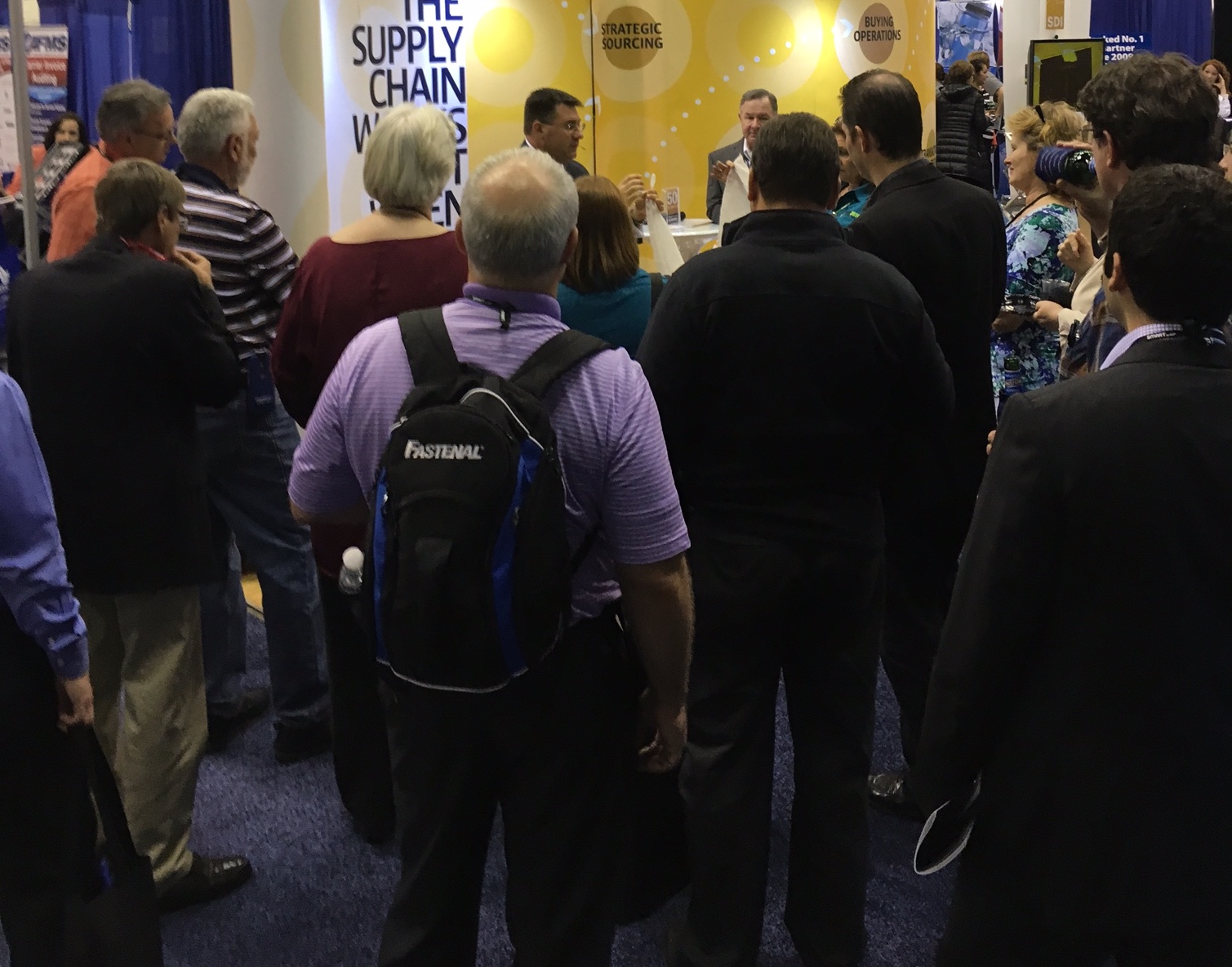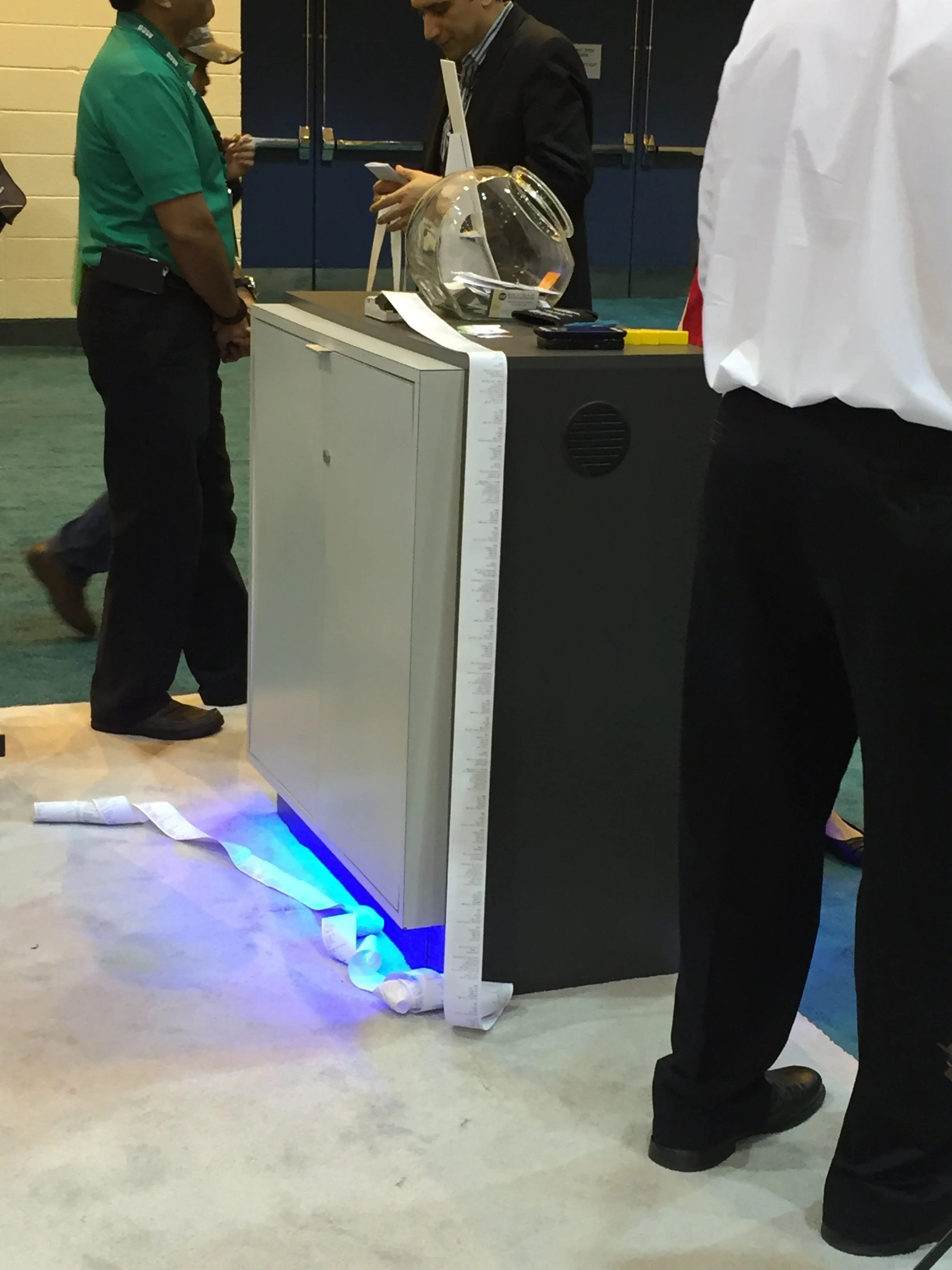“What do you do with the big crowd you create at the trade show booth?”
About two years ago, I was interviewed on Tim Patterson’s trade show podcast. It was the first time I’d ever been interviewed, and I wasn’t quite prepared for the most important question he asked me - “What do you do with the big crowd you create at the trade show booth?”
Honestly, I thought the answer was so blindingly obvious I didn’t know how to put it into words. “You collect their contact information and follow up with them.”
This was - in fact - not obvious at all.
I recently read that 87% of trade show leads are never followed up on, and most sales people are willing to make one phone call to a prospect who left their information at a trade show booth. If that person doesn’t answer the phone, it’s over.
If you’ve read our trade show Cost Per Lead blog post, this should be an infuriating statistic. Imagine spending $1000 per lead at a trade show and knowing that your sales team called that $1000 lead only once. It’s painfully frustrating.
Why don’t they follow up?
Traditional trade show thinking says that the trade show booth is a “belly to belly” selling opportunity. Prospects come into your booth, talk with your sales team, develop a familiarity with your company, set follow up appointments, and eventually close deals. That’s why traditional booth salesmen feel they need commitment from the prospect before making a follow up call.
Unfortunately, this is a very inefficient strategy. Each lead has to be individually greeted and qualified before the sales person can scan their badge or collect their contact information. There just isn’t enough time in the show day to connect with a large number of people.
Traditional booth strategy thinkers justify their process by saying they’re building connection, nurturing leads, and closing sales at the show. Absolutely true. However, in the process, you’re spending at least $50,000 per day for a place to close sales with people who already know you, already know what you can do for them, and already know they need what you sell. Your booth is really a very expensive showroom.
That was the blindspot that I didn’t know about when I was talking to Tim. He saw the huge crowds and thought, “How can I talk to all of those people?” He knew the 8 second rule - the booth team has 8 seconds to approach a booth visitor before she leaves the booth - and he knew it was impossible to get to everyone in the crowd in time.
So here’s what I should have told Tim and his listeners: “you don’t have to talk to everybody at the show.”
The biggest advantage of the trade show is volume. There are sometimes tens of thousands of potential prospects gathered in the same building, and all of them are focused on learning about companies that can solve their problems. All you have to do is get them to stop and listen to you while they ignore 5000 other exhibitors trying to do the same thing. You need to grab their attention and focus it on your booth. By stopping a huge crowd at your booth several times an hour, I can increase the number of people who hear your value proposition by a factor of 10 or more.
Some of these people will want to come into your booth and have a long, detailed talk about your product and how it will help them. Others want to learn more, but for various reasons - time, interest level, fear of speaking to salesmen, etc - do not want to come into the booth.
Rather than requiring that all of these people enter the booth and learn more, my Trade Show Funnel Strategy gives people multiple ways to connect with your company and multiple ways to commit to a follow up step.
Here’s how it works:
At the end of the presentation, I invite everyone to enter the booth and learn more about the featured product, scanning their badge and collecting a prize in the process. I am very clear that when the prospect scans their badge, they will be sent a whitepaper or other info-product with useful information about the problem the featured product solves.
At this point, each person in the aisle can do one of three things:
1) The person can scan their badge and come into the booth and learn more. These are the most interested prospects, and your sales team should invest their trade show time talking to them, qualifying them, answering their questions, and making solid commitments to meetings and calls after the show. Because your team isn’t trying to talk to “everyone,” they have a lot more time to focus on these key prospects.
2) The person can scan their badge but not come into the booth to learn more. These are the people who are interested in your offer but aren’t necessarily prepared to have a conversation right now. They might not have time to talk. They might be afraid to talk with salespeople. They might be only marginally interested but need to learn more. Regardless, they have opted-in for your info-product, you have collected their contact information, and your team can follow up with them.
3) The person can neither scan their badge nor enter the booth. These people have heard your message, decided they aren’t interested, and are moving on to other things. Perfect! You have disqualified these people, so you can focus your attention on the people who are interested.
BONUS: To follow up, you’ll send automated emails and the giveaway item include the address of a landing page, where the prospect can download a white paper or another info-product. They’ll need to enter their name and email address to access it. Anyone who goes to the landing page and downloads the info-product is qualifying themselves, and therefore should get a follow up phone call.
The best part is that the initial follow up steps can be handled by email automation. There’s no need to pre-qualify or “scrape” the leads because everyone who scans their badge is actually expecting your email. More importantly, you’re guaranteeing that these emails go out on time: there’s no risk that a nervous salesperson will develop call reluctance, procrastination, or even a common cold that might keep him out of the office.
A series of three emails go out automatically 24 to 48 hours after the show closes, so your prospects are receiving the information they requested at a time when they can consume it. Your email automation system can track clicks and send you a daily report of who clicked on the message, so your sales team can immediately focus on the most interested leads, and begin following up with everyone else as time permits.
There is no reason not to make these follow up calls. They are absolutely not “cold calls” in any sense of the word: the prospect has expressed interest at the trade show booth, and they have pursued further information through the info-product offered in the email.
Your sales team only has to call the prospect, say, “Thanks for visiting our trade show booth at XYZ Expo, we saw that you downloaded our white paper, it seems like your having trouble with (describe the problem your product solves)…” This carefully positioned statement (combined with a classic Chris Voss “label” from Never Split the Difference), is virtually guaranteed to get a response from the prospect.
So there you go, Tim. An easy-to-implement, automated system that makes it possible for any company to handle extremely high volume booth traffic, identify ideal prospects at the show, and easily follow up with their “hottest” prospects to close more sales.
Stopping a huge crowd really is the only way to effectively and efficiently prospect a major trade show. You have to find the right people, present your company in an unforgettable way, persuade people who would normally ignore you to engage with your booth, and preserve the relationship for follow up after the show.
Effective exhibitors leverage all the tools at their disposal - trade show attraction, expert booth team, giveaways, badge scanners, and marketing automation - so they get the results they need from their trade show investment.

